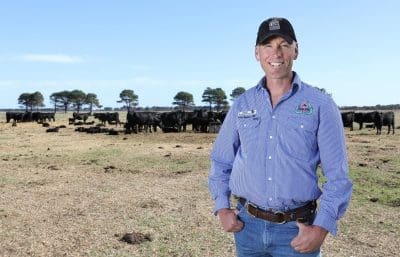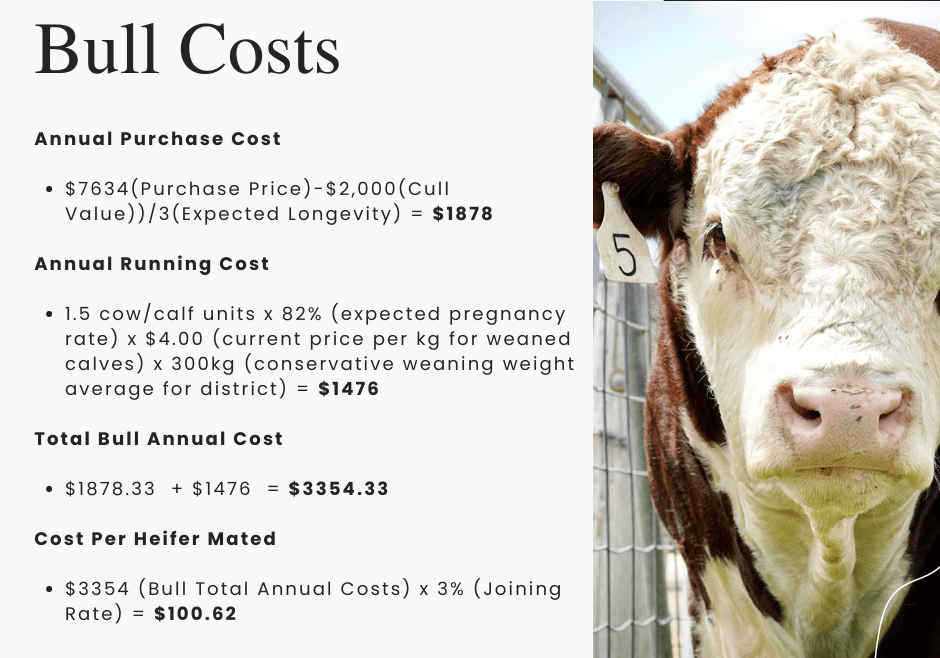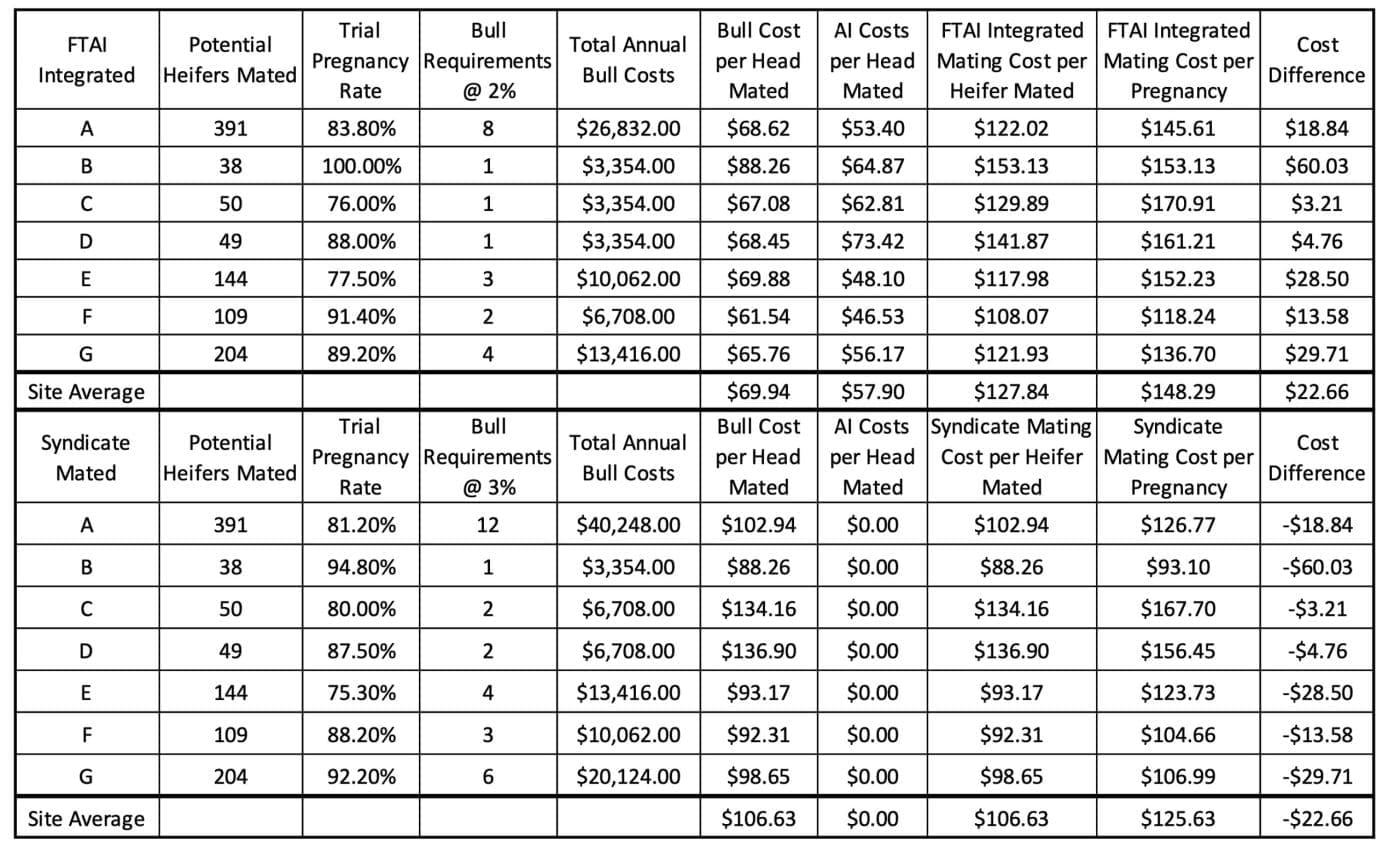CHOOSING a breeding method often comes down to economics as much as in practical application. However, the choice many people make is based on the notion of how much it costs to produce a calf.
While much attention is given to this metric, it’s important not to overlook the principal purpose of breeding. That is to produce as many live calves as possibly in the most cost-effective and productively efficient manner as possible.
The recent reader discussion sparked by last week’s Beef Central article on Fixed Time AI highlights the importance of firstly making valid comparisons between breeding systems, and secondly ensuring the chosen method is actually producing live calves in the most efficient and productive manner.
Discussions around the cost of Fixed Time AI (FTAI) often start on the premise of costs of natural (syndicate mating) a team of bulls compared against those of FTAI. It can be easy to use anecdotal experiences to justify a position for or against.
However, anecdotes often don’t represent broader production environments, or are based around similar types of enterprises. This can result in skewed observations or experiences that don’t always provide valid comparisons on methods.
As part of a recent MLA funded Producer Demonstration Site, comparisons have been made on the costs associated with FTAI against syndicate mating in beef heifers.
Given the recent commentary and industry engagement on this subject, the published results of this PDS allow some valid comparisons, which have a much broader application for industry to be made by producers seeking to choose a breeding method.

Enoch Bergman
The PDS, led by WA cattle veterinarian Dr Enoch Bergman of Swans Veterinary Service was conducted over three years and involved more than 15 trial groups of heifers from ten different properties of various sizes and breeding herd numbers.
In comparing breeding methods, most discussions focus on the cost to produce a calf. Often these costs are not conducted on fair basis. Bull costs on natural mating are often calculated by determining a bull’s value on the basis of purchase price, less salvage price. This figure is then divided by the expected number of calves to be born over the working life of the bull.
However, when moving on to compare FTAI costs, most anecdotal comparisons tend to list the FTAI costs as line items to arrive at a cost per calf. The fundamental error in this approach is to neglect the fact that bulls have a greater cost beyond that of their purchase price.
Dr Bergman says “Bulls cost money to own. They consume feed throughout the year that could otherwise be used by a cow unit. So, in the PDS, our bull comparisons always started with the inclusion of running costs along with purchase costs.”
“In the PDS we used industry values, starting with the purchase cost of bulls. If you look at the average for Angus bulls in 2017, the cost was $7634. We assumed a three-year working life and slaughter value of $2,000. Importantly, we had a conservative estimate that each bull consumes as much as 1.5 cow/calf units. In practical terms, each additional bull a producer owns essentially displaces 1.5 cows.”
Using this methodology (see summary below) Dr Bergman’s study was able to determine the actual annual cost of running a bull, accounting for both purchase and running costs, and then the cost incurred per heifer mated.

These costs, which Dr Bergman outlined in both the PDS report and at a presentation during Beef 2021 last year, can then be used to compare the cost of FTAI against syndicate mating.
“It’s really important to remember that total running costs impact on the actual cost per heifer mated. In the trial we showed that the cost of implementing FTAI for the average core producer across all of their heifers would have been $22.66 per pregnancy. But that was pretty variable, ranging from $3.21 to $60.03.”
The variation was due to the incurred extra costs to some producers through extra travel, or by not benefitting from a reduction in bull power, or due to increased fixed costs being distributed over a smaller population of heifers (i.e., large travel bill distributed over a small group of heifers).

Source L.PDS.1711 – Improving Heifer Productivity by Integrating FTAI into Commercial Cow Enterprises. Click on images for a larger view
As this table demonstrates, the variation in bull numbers required to join against heifers can lead to significant variation in costs per pregnancy.
However, the PDS demonstrated several key factors that shouldn’t be overlooked before a final choice on breeding method is made.
These additional factors were identified by the producers involved in the trial and included issues that can impact on overall breeding costs such as dystocia events, calf & heifer mortality as well as the rebreeding empty rate of first-calf heifers.
As table 3 demonstrates, the economic impact of these additional factors does play a significant role in determining the final cost difference between breeding methods.
As Dr Bergman pointed out, “AI sires are highly-proven sires. Their data around Calving Ease and Gestation Length is generated by production data as much as genetic information. When you buy a bull, even though he has EBVs he is still unproven, so the predictability on issues that impact dystocia and having live calves will always be less than from a proven AI sire.”
Significantly, one of the common misconceptions surrounding FTAI, particularly in heifers, is poor rebreeding success as a first-calf heifer.
The evidence presented in the PDS noted a significant difference in favor of FTAI over Syndicate mating. Dr Bergman points to the difference and noted that many poor rebreeding results are the result of poor heifer nutrition post calving, rather than due to any residual issues from synchronisation.
“It’s important to feed your heifers correctly and manage weight and body condition if you want to get them to rebreed,” he said.
Another noted cattle consultant, John Francis of Agrista in Wagga Wagga, has also looked at the challenges of comparing FTAI against natural mating.
He highlights a number of variables, in addition to those summarised above, in making comparisons.
“Costing calf weaned can be variable, as there are often additional kilograms at weaning – which adds significant value. It is important when making comparisons to ensure these variables are equally considered,” he said.
No doubt some industry members have made decisions on breeding methods based on their own values and assumptions. However, for those producers who do wish to compare methods, particularly to capture additional benefits such as reduced dystocia in heifers or to improve rebreeding in first-calf heifers, evaluating FTAI against synchronised mating is a worthwhile exercise.
The results and models published in the “Improving Heifer Productivity by Integrating FTAI into Commercial Cow Enterprises PDS” can be used to make some valid and accurate comparisons.
Ultimately the decision needs to be made in the context of the most cost-effective method of producing live calves and rebreeding those heifers. This context should also include opportunity to capture and use proven genetics across a broader group of a breeding herd.
- The full PDS results can be downloaded here, or to see the video presentation of results presented by Enoch Bergman recorded at Beef 2021 the recording is available here
 Alastair Rayner is the Principal of RaynerAg, an agricultural advisory service based in NSW. RaynerAg is affiliated with BJA Stock & Station Agents. He regularly lists and sell cattle for clients as well attending bull sales to support client purchases. Alastair provides pre-sale selections and classifications for seedstock producers in NSW, Qld and Victoria. He can be contacted here or through his website www.raynerag.com.au
Alastair Rayner is the Principal of RaynerAg, an agricultural advisory service based in NSW. RaynerAg is affiliated with BJA Stock & Station Agents. He regularly lists and sell cattle for clients as well attending bull sales to support client purchases. Alastair provides pre-sale selections and classifications for seedstock producers in NSW, Qld and Victoria. He can be contacted here or through his website www.raynerag.com.au


An excellent, balanced article from Al using real figures and commercial results. Cost benefit analytics need to factor in whole herd profitability, ALL associated costs of running bulls, opportunity costs and long term projections, not just the buy and sell price, spread across the calf numbers.
Anecdotes and opinions just don’t cut it, particularly in our modern cattle industry where ag tech is booming and producer knowledge and skill sets are up there as well.
Firstly I refer to Dr Bergman’s assumption that a bull takes the place of a 1.5 cow/calf unit. We have found that 1.0ha per bull is more than enough and usually a little less area. As for his cost of FTAI at $22.66 that is simply ludicrous, you can’t buy semen for that price and that doesn’t include all the items required for a FTAI program. We run a fairly large syncro AI program and we know our costs.
I have spoken to many producers that have utilised FTAI and Dr Bergman is way off the mark, maybe because it forms a considerable part of his business and self interest might come into play.
I reckon Phil Holmes was on the money and the comments that followed his article proved that.
Hi Mike,
If you have a close look at those tables, the average cost of FTAI was $57.90 per head. That’s real cost on 490 heifers over 7 different farms. Labour was an additional $12 per head. The $22.61 is the calculated extra cost of AI compared to natural mating.
Mike,
I’m not sure that in your haste to criticise the article, or in your determination to display your bias that you actually read what has been published. Since you seem to have ignored or overlooked or disregard the key points, can I firstly point out the research accounts for the feed, water and husbandry the bulls require over 12 months – this displacing 1.5 cow/calf units.. This seems fair unless your bulls are somehow magically able to not consume anything for 12 months? Secondly the FTAI cost is $22.66 ON AVERAGE… You must have missed reading the table that shows the range of costs from $3.21 to $60.03. Since you seem determined to find the most expensive line item to criticise you can probably find a cost you like in that table. Lastly you seem pretty comfortable drawing attention to previous comments and making commentary on Enoch Bergman.. Lets not forget you (and some others finding fault in FTAI) are also trying to make money selling bulls!! So yes we could question your bias and wonder if your comments are born f a desire to see more bulls in paddocks. For my part I’m always happy to read material that is actually factually based and hope these critiques don’t encourage Beef Central and Al Rayner to stop providing content that uses the science that we have invested in through our industry levies.
Great to see an article with actual data and real figures behind it over ‘hearsay’ and ‘anecdotal’ evidence.